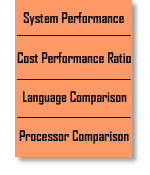Would you like to make this site your homepage? It's fast and easy...
Yes, Please make this my home page!
The RSA Algorithm

Encryption
A message in its original form (plaintext)
is encrypted into an unintelligent form (ciphertext) by a set of procedures
known as an encryption algorithm and a variable, called a key; and the ciphertext
is transformed (decrypted ) back into plaintext using the decryption algorithm
and a key.
Public-key cryptography
Public-key (or two key) cryptography involves
the use of two keys:
- A public key, which may be known by anybody,
and can be used to encrypt messages, and verify signatures.
- Aprivate-key, known only to the recipient,
used to decrypt messages, and sign (create) signatures.
Public-key encryption process
The essential steps of public-key encryption
process are following:
1. Each end system in a network generates
a pair of keys to be used for encryption and decryption of messages that it
will receive.
2. Each system publishes its encryption key by placing it in a public register
or file. This is the public key. The companion key is kept private.
3. If A wishes to send a message to B, it encrypt the message using B's public
key.
4. When B receives the message, B decrypt it using B's private key. No other
recipients can decrypt the message because only B knows B's private key.
Application for public
key cryptosystems
- Encryption/decryption: the sender encrypts
a message with the recipient's public key.
- Digital signature: the sender signs a message
with its private key. Signing is achieved by a cryptographic algorithm applied
to the message or to a small block of data that is a function of the message.
- Key exchange: two sides cooperate to exchange
a session key. Several different approaches are possible, involvig the private
key(s) of one or both parties.
RSA
- RSA - named after Rivest, Shamir and Adleman,
the inventors - was the first public key scheme which was capable of signatures
as well as encryption.
- It is the easiest to understand as well
as the most popular to implement.
- RSA obtain its security from the difficulty
of factoring large numbers.
RSA algorithm
- First choose two large prime numbers, p
and q, and find their product, n. n is also called modulus in RSA jargon.
- Compute z = (p-1)(q-1)
- Next choose a number e, relatively prime
to z = (p-1)(q-1) - this is the encryption key.
- Finally compute d such that the product
of e and d is congruent to 1 mod ((p-1)(q-1)). This is the decryption key.
- Now e and n together form the public key,
while d and n together form the private key.
Encryption with RSA
- To encrypt a palintext message block m,
compute C = Me mod n
- To decrypt the block, compute M = Cd mod
n.
RSA Example
p=3
q=11
n = pxq = 33
z = (p-1)(q-1) = 20
the relative primes to 20 are 1,3,7,9,11,13,17,19
e=3
d3=1 mod 20
d=7
C = Pe (mod n)
P = Cd (mod n)
If P = M(M=19) then C = 193 mod 33 = 28
P = 287 mod 33 = 19.
Security of RSA
- Brute force: this involves trying all possible
private keys.
- Mathematical attacks: there are several
approaches, all equivalent in effect to factoring the product of two primes
- Timing attacks: these depends on running
time of the decryption algorithm
The Factoring Problem
- Factor n into its two prime factors. This
enables calculation of (n) =(p-1)x(q-1), which, in turn, enables determination
of d=e-1(mod (n)).
- Determine (n) directly, without first determining
p and q. again, this enables determination of d=e-1(mod (n)).
- Determined d directly, without first determining
(n).
©
2002 www. thevsc.faithweb.com. All rights reserved.

